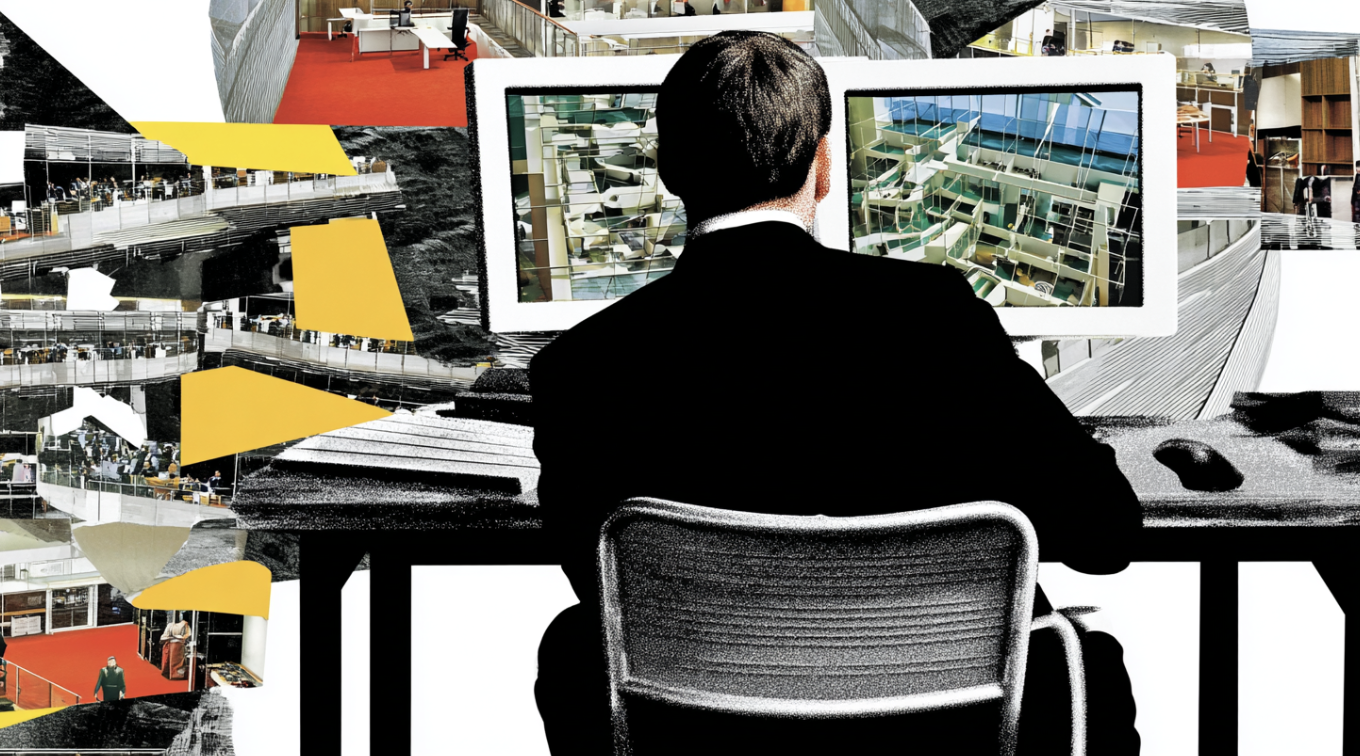Why your “good enough” workplace measurement isn’t good enough
Here are some of the status quo solutions workplaces use to measure their spaces and why they’re just not good enough.

Every square foot counts in real estate, and every dollar spent must yield a clear return. Yet many organizations still navigate their real estate decisions with inadequate data or, worse, no data at all.
Consider this: when it comes to measuring your company’s largest resource, its people, there are many HR and employee performance management systems in place. Why would you make decisions about your second largest resource, your places, based on gut instincts and a guy with a clipboard?
Real estate decisions reverberate throughout an organization, affecting not only the physical spaces where work happens but also its operations and the productivity and happiness of your workforce.
Here are some of the status quo solutions workplaces use to measure their spaces and why they’re just not good enough.
No measurement
This one is easy. You should not make million-dollar decisions impacting people, places, and your bottom line using subpar or zero data. Real estate is often one of the biggest line items on a company’s P&L, and you should be measuring it.
“Saving” on the cost of a technology solution that could help you make better multi-million dollar real estate decisions is penny-wise and pound-foolish.
Manual studies
The next level up from no measurement is time utilization studies, where people walk through your space with a clipboard once a year. They often count butts in seats and use those as an indication of utilization.
That may have made sense in a pre-Covid world where occupancy was relatively static, but today, no two workdays are the same.
Manual studies are highly biased by relying on a small sample size for a limited timeframe. Companies are leaving money on the table by using bad data that doesn’t accurately capture real utilization and usage of spaces.
And speaking of money, these time utilization studies are shockingly expensive! One tech leader mentioned spending $1.5M every year to have two people walk around the office with clipboards for two weeks of the year.
Badging data
Badge systems have traditionally been the go-to technology for building access and basic occupancy tracking. It can be tempting to rely on this data to understand utilization, especially if a company already has a badge system in place.
However, badge data is far from accurate. One of our customers did a study comparing badge data to Density sensors and found that the badge reader missed 20% of daily entrances at the elevator and 24% at the stairs. This discrepancy exists because not everyone who uses your space badges in. Think about visitors, contractors and employees who "tailgate."
Additionally, badge data doesn’t give insights into space utilization beyond entry points. It tells you nothing about how people use your space—from how long they spend there to where they spend their time.
Reservation data
Booking systems let employees book desks, meeting rooms and other shared resources within a workplace. Could be a great data source, right?
Unfortunately, misuse of reserved space is rampant. Many people book spaces but never show up - in fact, Density data found that 28% of meetings are ghost meetings, where rooms are reserved but unused.
And then there are drop-ins, where people use space without reserving it.
Either way, reservation data provides insights, but rarely accounts for actual usage or occupancy. It’s a mistake to use reservation data as a proxy for utilization.
Wi-Fi data
Wi-Fi is available in every office, which is why many teams can be lured into counting devices accessing Wi-Fi as utilization. Wi-Fi is a tool to provide internet - contorting it to understand occupancy doesn’t work for multiple reasons.
First, Wi-Fi is prone to overcounting. Various devices like laptops, phones, and printers are counted as individuals, skewing occupancy data. Wi-Fi and Bluetooth addresses on each device are also counted separately, further inflating counts. Privacy measures like Apple's randomized MAC IDs also make it difficult to track individuals accurately.
Wi-Fi data doesn’t provide reliable location information either. When you can’t tell when people are inside a meeting room or outside of it, it’s impossible to understand the usage of specific spaces. That’s pretty inconvenient when meeting rooms are worth their square feet in gold.
Finally, Wi-Fi tracking raises privacy concerns, with many employees feeling uneasy about being tracked throughout the day. Would you want to be tracked in your workplace?
Goodbye to “good enough”
Gone are the days when subpar data, unreliable measurements and costly guesswork were good enough. The best companies in the world are unlocking a new era of informed decision-making, where every square foot is optimized, every resource maximized, and every dollar spent with purpose.
It's time to leave behind the status quo and embrace a future where our most valuable spaces are measured and informed by data.
Learn more about Density's best in class sensors Entry and Open Area, or request a demo to see Density in action.
Key Takeaways

DisruptCRE founder shares how corporate real estate is changing
Companies are moving employees from underutilized offices into "space as a service” options with utilization data.
Watch now
Half of offices are empty but you still can’t find a meeting room
Employees waste up to 30 minutes a day looking for a meeting room to meet in workplaces.
Read moreMost recent

The truth behind “99% accurate” occupancy sensors
Accuracy in occupancy sensing depends on the type of space and situation you’re measuring—not a flat percentage claim.

Privacy and occupancy sensors: 3 practical realities to face
The right occupancy sensors count people while respecting privacy and shielding companies from costly security breaches.

Battery-powered sensors: New hype, same problems
Sensors with batteries decay over time. Learn why real-time occupancy data still demands a wired, scalable solution.
Explore other Density Products
Atlas for Workplace
Insights for the workplace that help you cut costs and deliver better spaces.
Learn more